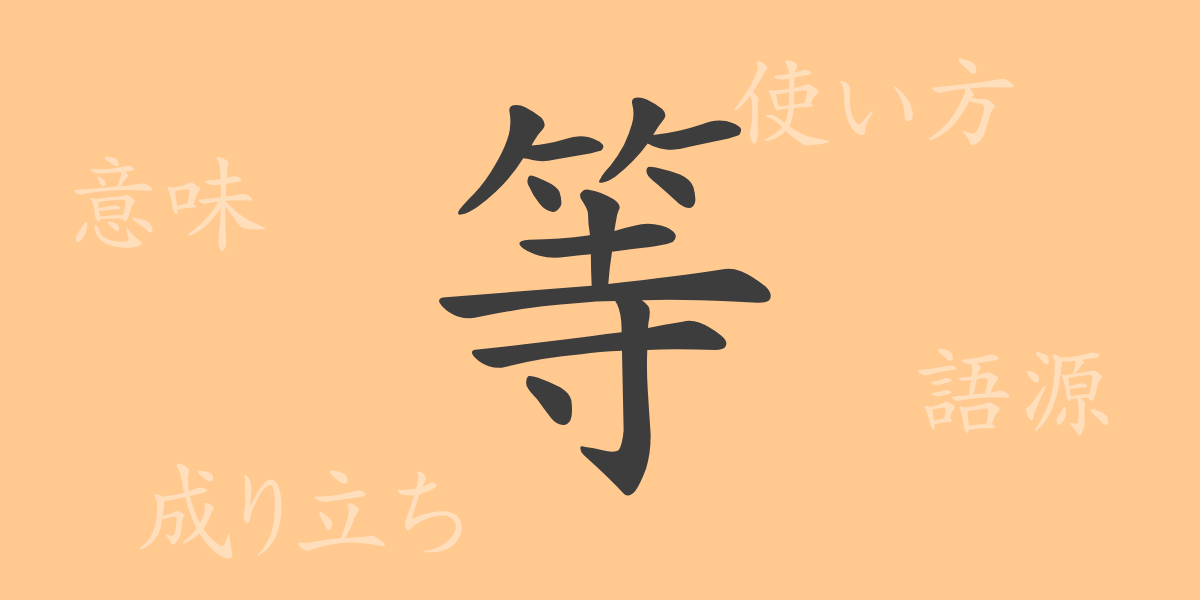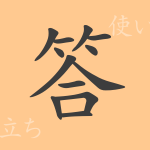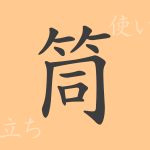In the Japanese language, each Kanji carries its own unique history and meaning. ‘等 (とう)’, frequently encountered in everyday life, is no exception. This article will delve into the origins, meanings, and usages of the Kanji ‘等’, as well as explore idioms and phrases that incorporate it, enhancing our understanding of its profound impact on the Japanese language.
Origins of ‘等 (とう)’
The Kanji ‘等’ originated in ancient China. Initially, it combined ‘竹 (bamboo)’ as the radical and ‘寺’ as the phonetic component, symbolizing a ‘boundary marker made of bundled bamboo’. Over time, it came to represent the concepts of ‘equal rank’ and ‘same level’, evolving to denote ideas like ‘equality’ and ‘equivalence’ in modern usage.
Meaning and Usage of ‘等 (とう)’
‘等’ primarily means ‘the same rank or level’ or ‘such as’. It is used to equate people or things or to indicate ‘others’ in a list, as in ‘彼等 (かれら, them)’ or ‘車等 (くるまとう, cars and others)’.
Reading, Stroke Count, and Radical of ‘等 (とう)’
The Kanji ‘等’ has various readings, depending on its usage in Japanese.
- Readings: On’yomi ‘トウ’, Kun’yomi ‘ひとしい’, ‘など’, ‘ら’
- Stroke Count: ‘等’ consists of 12 strokes.
- Radical: The radical for ‘等’ is ‘竹 (たけかんむり)’, used for categorizing Kanji related to bamboo.
Phrases, Idioms, and Proverbs Using ‘等 (とう)’
There are numerous idioms and phrases involving ‘等’, each illustrating the richness of Japanese expression. Here are a few examples:
- ‘平等 (へいとう)’: Equality, where all people or things have the same rights or status.
- ‘等身大 (とうしんだい)’: Life-sized, or true to one’s real nature.
- ‘等価交換 (とうかこうかん)’: An exchange where both parties give and receive items of equal value.
- ‘一等 (いっとう)’: The highest rank or prize.
- ‘二等分 (にとうぶん)’: Dividing something into two equal parts.
Conclusion on ‘等 (とう)’
The Kanji ‘等’ encompasses a wide range of meanings, from its origins to its modern implications. Mastering its use in Japanese communication is crucial. This article aims to provide a deeper understanding of ‘等’, enabling richer expressions in the language. For learners of Japanese, ‘等’ is certainly a vital Kanji to remember.

























